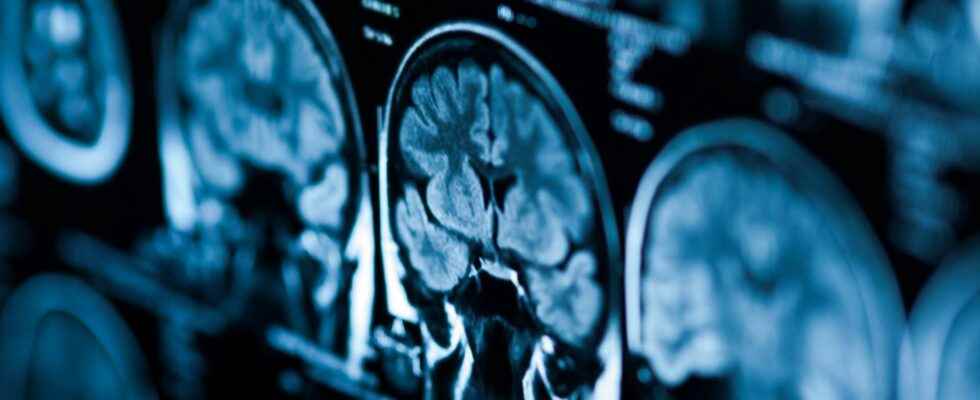The brain is the seat of cognition, memory, emotions… It is the organ that gives meaning to our lives! He is the conductor of our body and is responsible for our behavior. What is our brain made of? What are the different areas of our brain? How does it develop in utero and throughout life?
the central nervous system includes the spinal cord and the brain. Together, they integrate information from our environment, manage motor skills and allow cognitive functions. the brain consists of 75% water. He weighs about 1.3 kg. This essential organ is extremely well protected. He bathes in a liquid, the cerebrospinal fluid which allows it to absorb shocks. It is covered by the brain which are three connective tissue membranes. Most solid is here dura mater : it is located just under the brain cavity.
What are the different areas of the brain?
The brain is divided into two symmetrical zones : the right hemisphere and the left hemisphere. The two hemispheres are joined by the corpus callosum in the center. Each hemisphere has five zones:
- the frontal lobe: place of reasoning, language and voluntary motor coordination;
- the parietal lobe: behind the skullseat of awareness of the body and the environment;
- the earlobe temporal : center of hearing, memory and emotions;
- the earlobe limbic : receptacle for information related to emotions, affects and memory;
- the lobe of theisland : treatment of sensations such as painodors and taste.
the cerebellum is an anatomical piece located under the brain, at the back of the skull, at the top of the neck. It allows control of balance and coordination of movements. the brainstem allows information to pass between the brain and the spinal cord.
What are brain cells?
The brain is made up of different cell types:
- The neurons : there are more than 100 billion in our brain. These have a cell body and multiple arms or extensions, the dendrites. The most important extension is called the axon. This is how neurons communicate with each other. via the synapses. Covered with a sheath, the myelinthey allow the propagation of thenerve impulses.
- The glial cells (astrocytes and oligodendrocytes): as numerous as the neurons, they constitute the glia, the environment or the supporting tissue of the neurons.
Gray matter and white matter: what are they?
The gray matter consists of the cell bodies of neurons. The white matter includes nerve fibers of neurons, axons. In the brain, the gray matter is rather in the periphery of the brain while the white matter is in depth. In the brainstem and in the spinal cord, the distribution between white matter and gray matter is reversed: it is the gray matter which is found in depth. However, there are areas of gray matter in the brain: these are the central gray nuclei.
How does the brain develop?
The nervous system is made up of the brain and the spinal cord. During the’embryogenesis, it develops from just a few cells. Each of them is at this stage capable of giving rise to specific cells of any region of the brain. As development progresses, cells differentiate according to their position in the nervous system. This is called the phenomenon of regionalization. The different regions will then connect to each other, in a coordinated way in time and space.
our brain evolves throughout life based on our experiences and learning. It’s here brain plasticity. It is particularly important during childhood but remains in adulthood.
In addition to the workshops offered throughout France by the Society of Neurosciences, at the origin of Brain Week, Futura highlights the latest scientific advances concerning our ciboulot. Cognition, psychology or even unusual and extraordinary stories, a collection ofitemsof questions answers and of podcast to be found all this week under the tag ” brain week » and on our social networks!
Interested in what you just read?
Subscribe to the newsletter Health question of the week : our answer to a question you ask yourself (more or less secretly). All our newsletters
